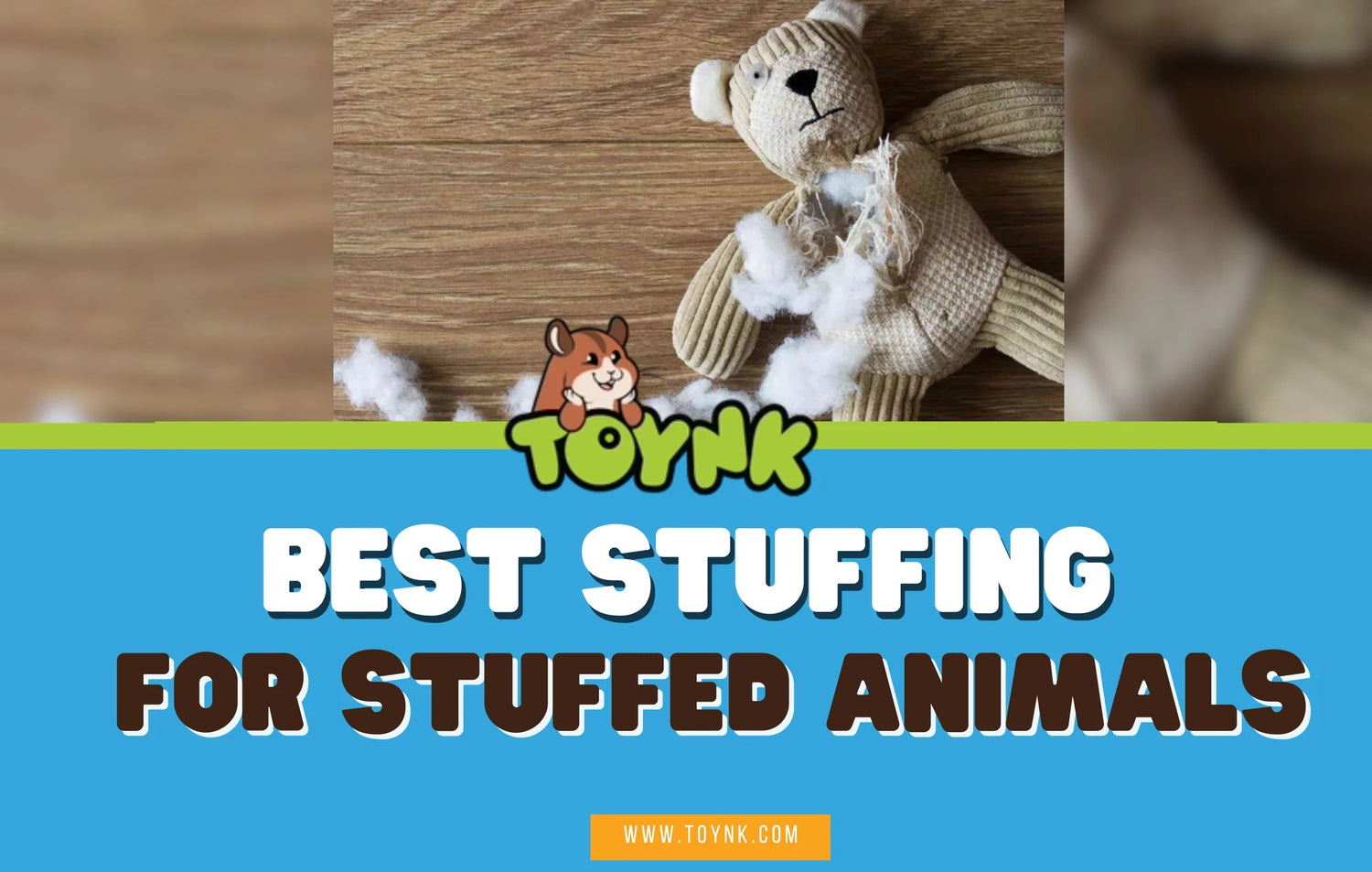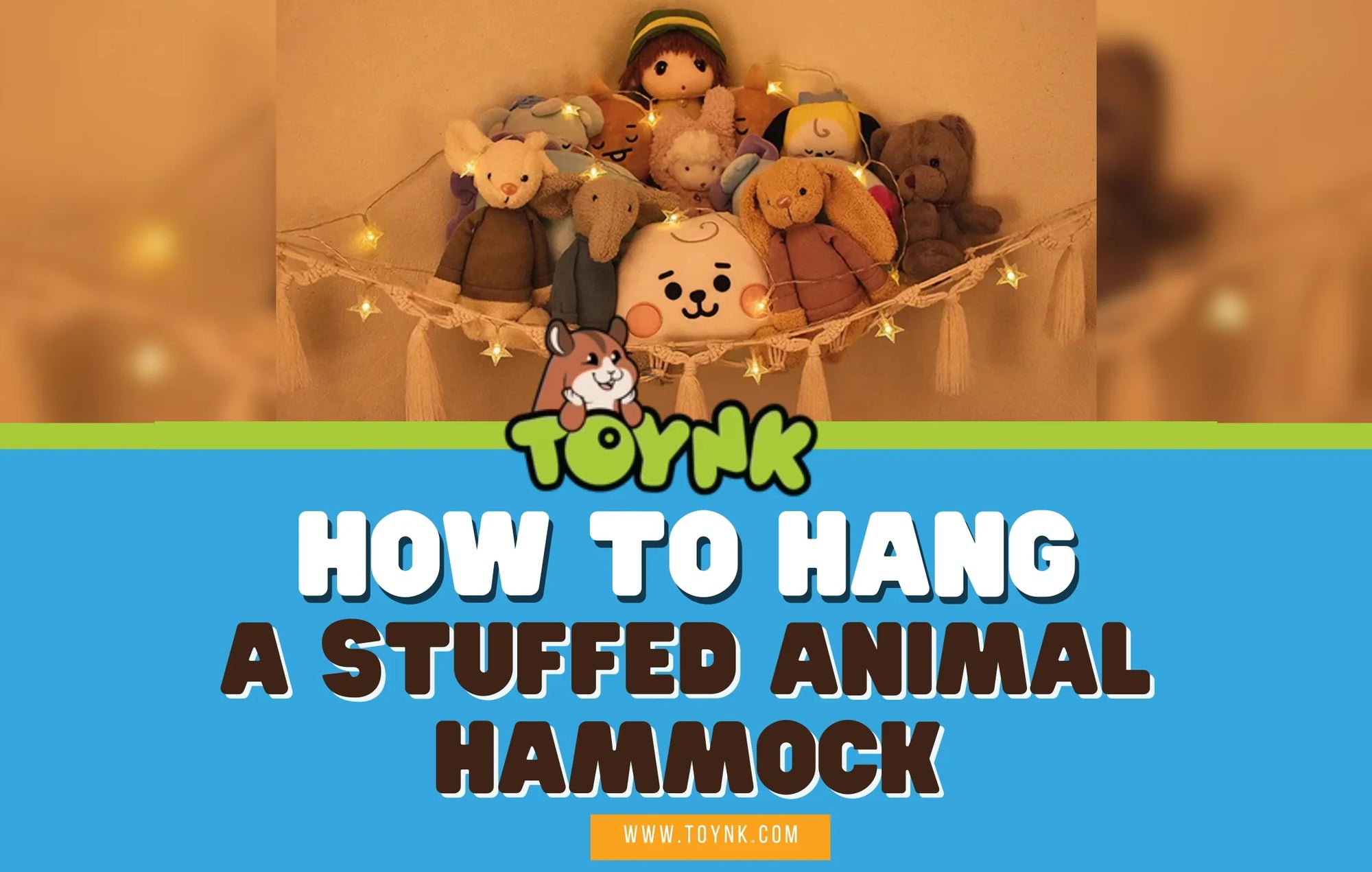Have you heard the saying, "It's what's inside that matters"? In the case of stuffed animals, it is the most important part. Whether you're creating a DIY project, restoring a beloved childhood companion, or shopping for the perfect cuddly friend, selecting the right stuffing material is crucial for comfort, safety, and durability.
Our team has researched and tested various stuffing materials to bring you this comprehensive guide on the best stuffing for stuffed animals.
Shop The Plush Toys Collection Now
Top 3 Stuffing Materials for Stuffed Animals
1. Natural Soft Materials

Natural stuffing materials offer breathability, hypoallergenic properties, and environmental benefits. Here are the top natural materials:
-
Cotton: The most popular natural stuffing choice, cotton stuffing is hypoallergenic, breathable, and perfect for sensitive skin. Organic cotton varieties eliminate exposure to synthetic pesticides, making them ideal for children's toys and teddy bear projects [1].
-
Cotton Fabric Scraps: Pre-washed fabric scraps provide an eco-friendly alternative that's both cost-effective and sustainable.
-
Kapok: Harvested from the seed pods of the kapok tree, this silky natural fiber is eight times lighter than cotton and naturally water-repellent. Its buoyant properties make it excellent for decorative pillows and lightweight toys.
-
Bamboo: This sustainable option combines antimicrobial properties with a silky texture. Bamboo fiber stuffing resists odors and bacteria while maintaining softness through repeated use.
-
Eucalyptus Fiber: Made from fermented wood pulp, eucalyptus fiber offers superior moisture management and naturally antibacterial properties. It's particularly effective in humid environments.
-
Corn Fiber Fill: Created from corn starch, this hypoallergenic corn fiber provides a soft feel while being completely derived from renewable resources.
-
Wool: Known for its warmth and durability, wool stuffing naturally resists dust mites and mold. However, it requires special care and can be more expensive than other materials [2].
2. Synthetic Soft

Synthetic materials offer durability, affordability, and consistent performance:
-
Polyester Fiberfill (Polyfill): The most common synthetic stuffing, polyester fiberfill maintains its shape well and is machine washable. Different fiber thicknesses create varying textures — thinner strands provide softness, while thicker polyester fibers add structure.
-
Recycled PET Fiberfill: Made from recycled plastic bottles, this eco-conscious synthetic option offers the durability of recycled polyester while minimizing environmental impact and reducing plastic waste.
-
PLA Fiberfill: A breakthrough in sustainable synthetics, PLA (polylactic acid) is made from corn starch and offers polyester-like resilience while being completely biodegradable and hypoallergenic.
-
Polystyrene Bean Bag Filling: Small, lightweight beads that create a unique texture. These work well for stuffed toys that need to conform to different shapes.
3. Hard

Hard stuffing materials provide structure and weight, ideal for toys that need to stand upright or offer sensory benefits:
-
Glass Pellets: Non-toxic, environmentally friendly, and won't compress over time. These provide consistent weight distribution but should only be used in toys intended for older children due to concerns about choking hazards.
-
Plastic Pellets: Lightweight synthetic pellets that maintain their shape and don't degrade quickly. They're softer than glass pellets, yet still provide structure.
-
Steel Shots: The most durable option, steel shots are non-toxic, fire-resistant, and hypoallergenic. However, they're significantly heavier and present choking hazards for small children.
-
Buckwheat Hulls: Natural hulls that add weight and create a unique crinkly texture. They're particularly popular in sensory toys and meditation cushions, though they may attract bugs over time.
Shop The Plush Toys Collection Now
Related Posts:
- How Can You Make Stuffed Animals Soft Again?
- How Can You Dye Stuffed Animals?
- How Can You Make A Stuffed Animal Zoo?
Factors to Consider
Age-Appropriate Materials

-
For Infants (0-12 months): Choose hypoallergenic materials, such as organic cotton or bamboo. Avoid any small parts or pellets that could pose choking hazards.
-
For Toddlers (1-3 years): Natural fibers, such as cotton and kapok, are ideal. Ensure all seams are reinforced to prevent stuffing exposure.
-
For Children (4+ years): Most stuffing types are suitable, but continue to avoid loose pellets in toys that may be damaged during play.
Regulatory Compliance
All stuffed animals must comply with Consumer Product Safety Commission (CPSC) standards, which mandate rigorous testing for seam strength and filler security. Materials must withstand compression and stretching without leakage, especially for toys intended for children under 3 years.
Availability
Some toy stuffing materials like bamboo and wool toy stuffing can be difficult to find, while opting for cotton may lead to more stuffing availability.
Weight

Some materials, such as steel shots and glass pellets, are heavier than others. You might want to consider opting for toys with lighter filling for infants and go for those which are somewhat heavier for older children.
Softness
Another thing to consider before you stuff a toy is the softness of the material you are about to use. For instance, Kapok and polyester are softer than pellets and steel shots.
Price & Value

Finally, you need to consider the cost of your toy stuffing options to see if it is within your budget. Mohair and wool can be quite expensive, while a Polyester FiberFill is more affordable.
Go for the ones that can provide you with the best value for your money.
Environmental Impact & Sustainability
The toy industry is increasingly focused on reducing environmental impact:
-
Biodegradable options, such as kapok, bamboo, eucalyptus, and PLA corn fiber, naturally decompose, contrasting with petroleum-based synthetics that contribute to microplastic pollution.
-
Recycled Materials: Utilizing recycled polyester fiberfill and implementing processing programs for polystyrene beads helps reduce landfill contributions.
-
Sustainable Sourcing: While natural materials offer environmental benefits, consider sourcing challenges — kapok requires tropical cultivation, and bamboo processing often involves chemical treatments.
Types of Stuffing Materials
After learning about the different types of stuffing components, it’s time to decide which suits your project best. Here’s a quick overview of the most popular types of stuffing materials:
Organic
Any stuffing material derived from an animal or plant is considered organic and environmentally friendly. Common organic stuffing materials include wool, bamboo, and Kapok.
Eco-Friendly

For a more sustainable option, consider using an eco-friendly stuffing material. These materials are usually made from recycled materials and are biodegradable.
Some popular environment-friendly stuffing materials include recycled PET fiber fill and bamboo.
Synthetic
When it comes to stuffing materials, synthetic options are usually the most affordable. These materials are often made from plastic or polyester. Some popular synthetic stuffing materials include polyester fiber and microbeads.
Factors to Consider When Choosing Stuffing
Weight Requirements
-
Lightweight: Kapok, bamboo, cotton for easy handling
-
Medium Weight: Polyester fiberfill for balanced feel
-
Weighted: Glass pellets, steel shots for therapeutic applications
Maintenance Needs
-
Machine Washable: Polyester, organic cotton
-
Spot Clean Only: Kapok, wool
-
Professional Cleaning: Mohair, specialty natural fibers
Budget Considerations
-
Most Affordable: Polyester fiberfill, cotton scraps
-
Mid-Range: Organic cotton, bamboo blends
-
Premium: Wool, mohair, PLA corn fiber
Texture Preferences
-
Ultra Soft: Kapok, fine bamboo, thin polyester fibers
-
Structured: Thick polyester fibers, foam inserts
-
Sensory: Buckwheat hulls, crinkly materials
Specialized Applications
Therapeutic & Weighted Stuffed Animals
For anxiety relief and sensory therapy, weighted stuffing like glass beads or steel shots provides deep pressure stimulation. These should only be used in products designed for adults or older children under supervision.
Aromatherapy Integration
Natural materials like lavender-infused cotton or eucalyptus fiber can add therapeutic scents, although these may fade over time and trigger allergies in sensitive individuals.
Interactive Features
Buckwheat hulls and crinkly materials add engaging textures for pet toys and sensory play items.
FAQs
What is the best filling for a stuffed animal?
The best filling for a stuffed animal will depend on your specific needs. However, some popular and environment-friendly choices include recycled PET fiber fill, bamboo, and wool.
Can cotton balls be used as stuffing?
Yes, cotton balls can be used as stuffing, but they’re not the best choice. The reason is simple - they are not durable and can easily fall apart.
Are synthetic stuffing materials safe?
High-quality synthetic materials, such as polyester fiberfill and PLA corn fiber, are safe when used in properly constructed toys. Always choose products that meet CPSC safety standards.
How much stuffing do I need for a stuffed animal?
The amount varies by size and desired firmness, but generally plan for approximately 1-2 ounces of stuffing per cubic inch of toy volume. Start with less and add more stuffing as needed.
Conclusion
Selecting the best stuffing for stuffed animals involves striking a balance between safety, comfort, durability, and environmental impact. Natural materials, such as organic cotton and kapok, offer eco-friendly options with excellent safety profiles, while synthetic alternatives, like polyester fiberfill, provide unmatched durability and affordability.
For environmentally conscious consumers, emerging innovations like PLA corn fiber and bamboo blends promise to reshape the industry by prioritizing both planetary health and comfort. As regulations continue to emphasize safety and sustainability becomes increasingly important, we expect to see continued growth in biodegradable and recycled stuffing options.
Whether you're crafting a special gift, restoring a treasured keepsake, or simply curious about what makes your favorite plush toys so huggable, understanding these stuffing options helps you make informed decisions that prioritize safety, comfort, and environmental responsibility.
If you are looking for plushies to add to your collection, make sure to check Toynk out!
Shop The Plush Toys Collection Now
References:
- https://www.britannica.com/topic/cotton-fibre-and-plant
- https://www.sciencedirect.com/topics/materials-science/wool-fiber



